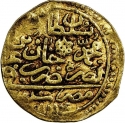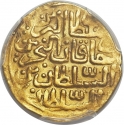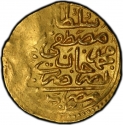You are about to finish your registration. Please check your mailbox (including spam folder). There should be a letter with a confirmation link. Check setting to make sure that your e-mail address is correct.
Send letter againDescription
Ibrahim (1615–1648) was the Sultan of the Ottoman Empire from 1640 until 1648. His unstable character made him prey to the ambitions of his ministers and relatives and to his own self-indulgence; as a consequence, the Ottoman state was weakened by war, misrule, and rebellion during his reign (1640–48).
Early in his reign under the guidance of the able but ambitious grand vizier Kemankeş Kara Mustafa Paşa, Ibrahim established peaceful relations with Persia and Austria (1642) and recovered the Sea of Azov hinterland from the Cossacks. After the execution of Kara Mustafa (1644), Ibrahim, acting on the advice of his new ministers, sent an expedition to Crete; thus began the long war with Venice (1645–69). Having spent his early life in confinement, Ibrahim was mentally unstable and came increasingly under the influence of the women of the harem and his court ministers. His eccentricities and extravagance necessitated the imposition of new taxes, arousing discontent in Constantinople and the outlying provinces. He was deposed on Aug. 8, 1648, by a Janissary uprising supported by the ulama (religious notables) and was executed 10 days later.
The Eyalet of Egypt operated as an administrative division of the Ottoman Empire from 1517 to 1867. It originated as a result of the conquest of Mamluk Egypt by the Ottomans in 1517, following the Ottoman–Mamluk War (1516–17) and the absorption of Syria into the Empire in 1516. Egypt always proved a difficult province for the Ottoman Sultans to control, due in part to the continuing power and influence of the Mamluks, the Egyptian military caste who had ruled the country for centuries.
Obverse

|
Tughra in Osman II name, Ottoman Turkish legend "Struck in Egypt" and the accession year in Hejira (AH1049) below. سلطان ابراهيم بن احمد خان |
|---|---|
Reverse

|
Depicts 4-line Arabic legend: Sultan of the two lands, Khaqan (emperor) of the two seas, the sultan son of the sultan. سلطان البرين |
| Edge |







